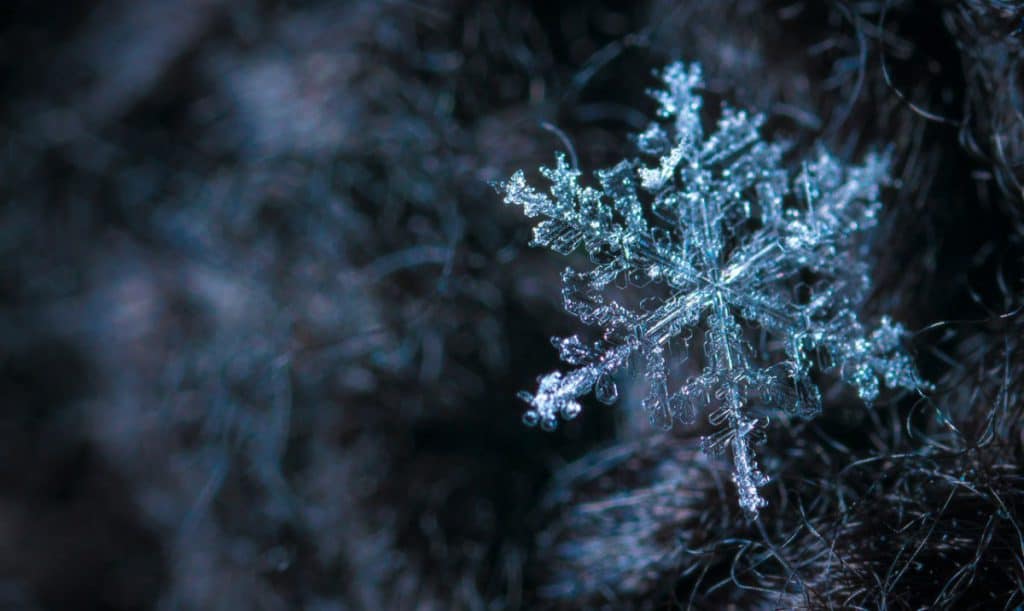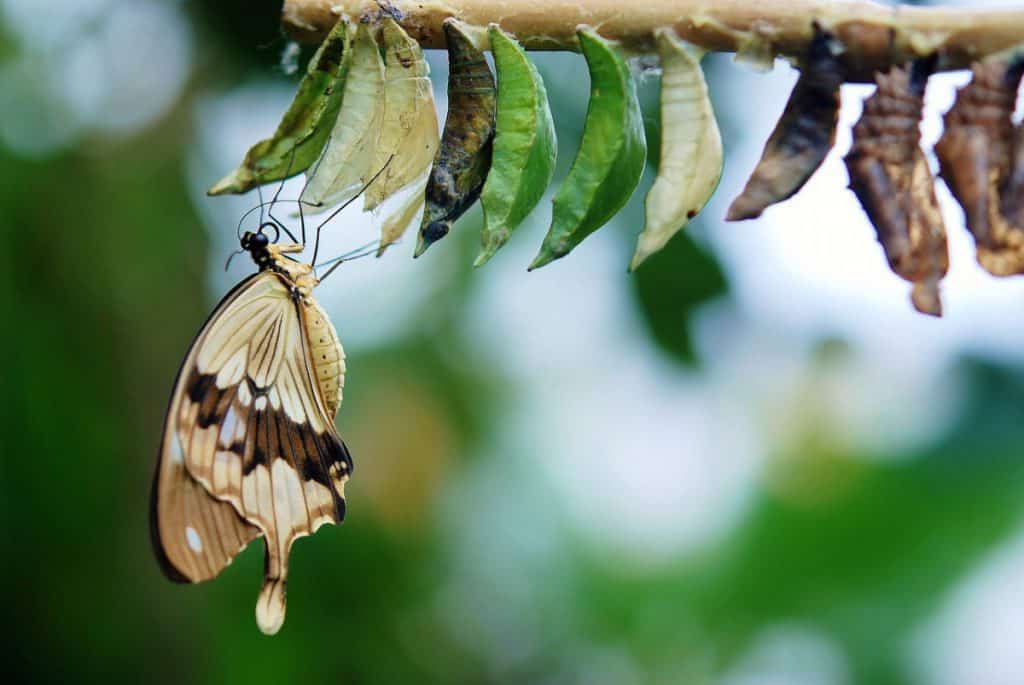
Butterflies, like other cold-blooded animals, cannot heat themselves as warm-blooded ones do. They need external heat sources, so wintertime is a great survival challenge for them. While a few classes, for example, the Painted Lady, migrate to warmer places to cope with low temperatures, most butterflies have to look for a secure place to hibernate during the cold time of the year.
Which Butterflies Hibernate? Most species spend the wintertime as caterpillars. But many classes (the brimstone, peacock, comma, red admiral, and small tortoiseshell) hibernate during that time in the adult form.
Let’s learn more about what butterflies do in the winter.
What happens to butterflies in the winter?
Butterflies are amazing creatures that resemble alive flowers. They create an exceptional sense of harmony. No wonder they are so loved by children for their brightness and fantastic beauty. We associate the butterfly with the summer because we have an excellent opportunity to watch them.
But with the onset of cold weather, we forget about them. And only particularly inquisitive naturalists ask themselves: “What do butterflies do in winter?” And it’s fascinating how these fragile creatures endure wintertime.
Maybe they, like birds, migrate to warmer climes? Partially yes. Some types of butterflies move to hotter places. But where do they go?
It depends on the habitat of the butterfly. Some fly to countries of tropical Africa, others to Mexico, and others – like Painted Lady – just to warmer areas.
They leave their offspring there, which will fly back later.
How do the butterflies hibernate?
Many kinds of butterflies have a very short lifespan, only a few weeks or even days. So they cannot survive in winter. Since the butterfly moves through its life stages from an egg to a caterpillar, a chrysalis, and the butterfly itself – it spends winter in one of these phases. And all of these states are different.
Some butterflies hibernate while still in the egg. In this case, they hide from the frost under the bark of trees. Or they use places where it is not so cold as outside.
Those that hibernate in the form of a caterpillar can adapt in different ways. Some butterflies wrap themselves in leaves and attach it to the stem with their threads. Others hide, covered in their web in the crevices of the bark or under it. Moreover, some species do not tolerate cold. While they are caterpillars, they hide pretty deep, so that they probably will not freeze.
If we talk about different stages of a butterfly’s development, we can note other types of wintering. In the life cycle, the animal spends the longest time of active life in the caterpillar stage. But the time it spends in the fixed state of chrysalis can vary depending on species. Sometimes it takes two, and even three years for the full formation of the butterfly. Therefore, it is not surprising that butterflies are so adaptable to stressful climatic conditions, for example, in the Alps.

The silver-studded blue winters in the egg form, hiding under the bark of trees. The large copper and the meadow brown prefer wintering in the caterpillar stage. They stay in the ground and fallen leaves. Butterflies often transform into the chrysalis before the frost, and they wait for the winter in this state. For example, some members of the Pieridae butterfly family and the Papilio Machaon or the Old World Swallowtail wait the warm months, and the butterflies hatch in spring.
Some species can winter as adults. For example, Common Brimstone, Peacock butterfly hibernate in hollows, crevices, wrapping in the wings like a blanket. Butterflies can live in people’s homes, getting into a state in which all life processes slow down to the minimum or, more simply, into hibernation.
Which butterflies migrate?
Painted ladies migrate in groups.
Those insects are born almost at the very end of summer. As soon as the first autumn days come, Painted ladies gather in a swarm, and, like a giant cloud, migrate to the south. They winter in such warm lands as Mexico, Iran, and African countries. Butterflies lay their offspring there and die. And the descendants of those butterflies that flew over the oceans from northern lands depart on the return trip the following year.
Having laid eggs, they also die. At the end of the summer, the new butterflies are born. They, in turn, hit the road to warm countries in the fall to repeat the process. Each butterfly makes this far journey only once. And it is the cycle of their life.
Red Admiral butterflies prefer to travel alone.
Those butterflies have a military-style name, “Red Admiral.” These amazingly beautiful creatures make their long journeys for the winter covering hundreds and even thousands of miles. Moreover, unlike the Painted Lady, they do not fly in groups but travel alone. These butterfly flights cause many questions.
- Why do they fly away if they die after laying eggs?
- How do they find the right direction and choose the path?
- How do they manage to navigate during their flights?
- How long does it take to cross such long distances?
And there are still many open questions regarding these butterflies. Scientists are still trying to find the answers.
Do moths hibernate?
Adult moths of most species live for a short time. It can vary from a few days to several weeks, depending on the varieties. However, moths that hibernate during the winter can survive for months. Many moths, just like butterflies, feed on nectar, but some kinds of short-lived insects don’t feed at all.
Moths endure wintertime in different ways. In some classes, laid eggs will not hatch until the next spring, when food is abundant. Other species spend the cold months as caterpillars. They remain asleep until springtime, although some can feed during that time.
Others, for example, hawk-moths, over-winter as cocoons, protected from the frost under the soil. Finally, some kinds of moths winter as adult individuals. Most of those wintering insects, like the Herald, hibernate, but others can reproduce and fly during the wintertime, such as Winter Moth and December Moth.
Butterfly hibernation box
Many people have bird feeders or houses for wild bees in the garden. But do you know that butterflies appeared in the garden can stay there forever? If you want them to remain in your backyard, you should provide them with suitable conditions in the winter. To do this, it is worth buying or building a house for butterflies or butterfly hibernation box. In summer, it will serve as a shelter from rain and wind, and in winter, it will become a safe place where they could survive in this challenging time.
The classic butterfly hibernation box should be wooden. It is a small case with longitudinal holes located on its front. You can leave there water and fruits that you can feed butterflies. The house should be filled with a straw so that the insects have the right conditions during hibernation. The original elongated holes through which insects fly inward will protect them from danger like birds and mice.
It would be best if you placed the butterfly hibernation box among the flowers in a place protected from the wind. But make sure that the sun’s rays can reach it. These conditions are optimal for the butterflies. In some hibernation houses, one wall can be made of transparent plexiglass, so that you can easily watch beautiful insects.
To prevent wasps and hornets from making their nests in your box for butterflies, install it in the garden at the end of summer. Those insects are not the most pleasant guests in your backyard, and they can kill the butterflies.
How to attract butterflies to the hibernation box
You need to make some areas for flowers that will lure butterflies. That place for the plants should be large enough so that insects have enough space. You should have the following plants there: in the spring – violet, primrose, lilac; in summer – common heather, goldenrod, roses; in the fall – large nasturtium, lavender, mint, verbena, honeysuckle. Butterflies adore those flowers, but you can also buy nectar for them to make their lives sweeter.
Conclusion
As you can see, butterflies are much more complicated animals that all of us thought before. There is no correct answer to the question: do butterflies hibernate or migrate? It all depends on the species. Some butterflies migrate to the south. Moreover, they can travel in groups like Painted Ladies or alone, like Red Admiral. Anyway, it is exciting: such a small insect can cover thousands of miles!
Some kinds of butterflies hibernate, but they can do it in different forms: egg, chrysalis, caterpillar, or even adult individual. The same relates to moths. But they all have one thing in common: they need a protected and warm place for wintering. And you can help them to survive. Buy or build a specific hibernation box for the butterflies. Having it in your garden, you will attract those beautiful insects to your house. And you will have an opportunity to watch them every day!
Recent Posts
Tiny Black Bugs in Bathroom NO WINGS: What They Are and What to Do!
Finding tiny black bugs in your bathroom can be uncomfortable, to say the least. Especially if they are persistent, or they appear in very large numbers, which they often like to do. When it...
Tiny Black Bugs in Plant Soil - What Are They & What To Do About It
A short horror story: You get a new houseplant. You do your best to take care of it. You’ve ensured that it has the right soil, the right amount of sun, it gets enough water. And then one day, you...

